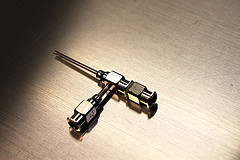▼ Reference
- Cao G, Li Y, Qi Y, Qiao Y, He J, Zhang H, Cui W, Zhou M. NIR-responsible and optically monitored nanoparticles release from electrospinning fibrous matrices. Materials Today Advances 2020; 6: 100044. Open Access
- Chen P, Wu Q S, Ding Y P, Chu M, Huang Z M, Hu W. A controlled release system of titanocene dichloride by electrospun fiber and its antitumor activity in vitro. European Journal of Pharmaceutics and Biopharmaceutics 2010; 76: 413.
- Chen Y, Liu S, Hou Z, Ma P, Yang D, Li C. Multifunctional Electrospinning Composite Fibers for Orthotopic Cancer Treatment in Vivo. Nano Res. 2014 Ahead of print Open Access
- Kim Y J, Park M R, Kim M S, Kwon O H. Polyphenol-loaded polycaprolactone nanofibers for effective growth inhibition of human cancer cells. Materials Chemistry and Physics 2012; 133: 674.
- Li G, Chen Y, Hu J, Wu X, Hu J, He X, Li J, Zhao Z, Chen Z, Li Y, Hu H, Li Y, Lan P. A 5-fluorouracil-loaded polydioxanone weft-knitted stent for the treatment of colorectal cancer. Biomaterials 2013; 34: 9451.
- Liu W, Wei J, Huo P, Lu Y, Chen Y, Wei Y. Controlled release of brefeldin A from electrospun PEG-PLLA nanofibers and their in vitro antitumor activity against HepG2 cells. Materials Science and Engineering C 2013; 33: 2513.
- Liu D, Liu S, Jing X, Li X, Li W, Huang Y. Necrosis of cervical carcinoma by dichloroacetate released from electrospun polylactide mats. Biomaterials 2012; 33: 4362.
- Luo X, Xie C, Wang H, Liu C, Yan S, Li X. Antitumor activities of emulsion electrospun fibers with core loading of hydroxycamptothecin via intratumoral implantation. International Journal of Pharmaceutics 2012; 425: 19.
- Ramachandran R, Junnuthula V R, G. Gowd S, Ashokan A, Thomas J, Peethambaran R, Thomas A, Unni A K K, Panikar D, Nair S V, Koyakutty M. Theranostic 3-Dimensional nano brain-implant for prolonged and localized treatment of recurrent glioma. Scientific Reports 2017; 7: 43271 Open Access
- Xu X, Chen X, Xu X, Lu T, Wang X, Yang L, Jing X. BCNU-loaded PEG-PLLA ultrafine fibers and their in vitro antitumor activity against Glioma C6 cells. Journal of Controlled Release 2006; 114: 307.
- Yan E, Fan Y, Sun Z, Gao J, Hao X, Pei S, Wang C, Sun L, Zhang D. Biocompatible core-shell electrospun nanofibers as potential application for chemotherapy against ovary cancer. Materials Science and Engineering C 2014; 41: 217.
- Yang G, Wang J, Li L, Ding S, Zhou S. Electrospun Micelles/Drug-Loaded Nanofibers for Time-Programmed Multi-Agent Release. Macromol. Biosci. 2014 Article in Press
- Yohe S T, Colson Y L, Grinstaff M W. Superhydrophobic Materials for Tunable Drug Release: Using Displacement of Air To Control Delivery Rates. J Am Chem Soc 2012a; 134: 2016.
- Yohe S T, Herrera V L M, Colson Y L, Grinstaff M W. 3D superhydrophobic electrospun meshes as reinforcement materials for sustained local drug delivery against colorectal cancer cells. Journal of Controlled Release 2012b; 162: 92.
▼ Credit and Acknowledgement
Author
Wee-Eong TEO View profile
Email: weeeong@yahoo.com
 ElectrospinTech
ElectrospinTech

